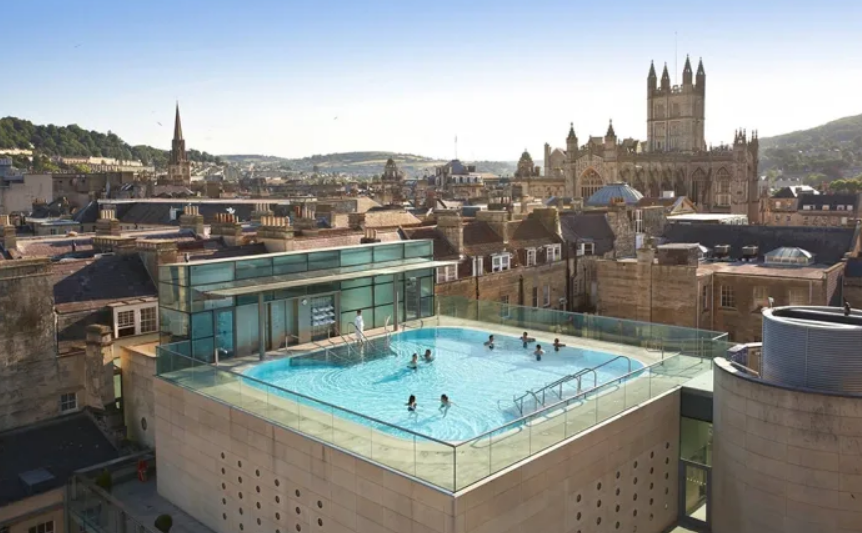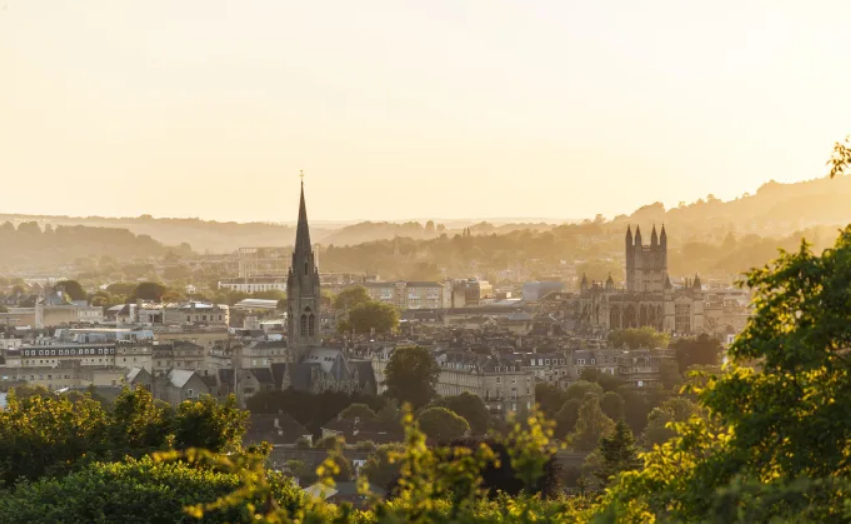Bath’s World Heritage Site encompasses the entire city – a very impressive honor that reflects Bath’s many distinctive features. The first is Bath’s unusual spa. Indulge in the thermal waters of the Thermae Bath Spa and you will follow the habits of other visitors over the last 2000 years. The second feature is the extensive remains of the Roman Baths, which, along with the associated temple complex, form one of the most important Roman sites in the country.
The reasons for Bath’s World Heritage status are many, many more, and in the 1700s, when Bath developed into an elegant resort with harmonious Georgian terraces, squares and groundbreaking crescent-shaped buildings built of soft-toned local Bath stone. This cityscape provided the perfect backdrop for scenic walks, just as Jane Austen did when she lived in Bath in the early 1800s. And the city is often used as a scenic backdrop for costume dramas.
The city’s beautiful setting is in a bowl surrounded by seven green hills. Bath The city is very compact: you can walk from the city center to the beautiful countryside in 15 minutes.
The heritage of Bath was further promoted in the summer of 2021 when it was awarded a second World Heritage Site as part of the European Spa Towns, a “transnational” inscription covering 11 historic spa towns in seven countries.
Cleveland Pools, the UK’s oldest seaside baths, has undergone extensive restoration work and is looking forward to opening this year. If that’s not reason enough to visit, be seduced by the city’s easily digestible galleries and museums, great shopping – Bath does a better job of retaining independent stores than most city centers – and a wide selection of independent cafes, cozy cafes and restaurants. choice of independent cafes, cozy bars, sophisticated cocktail bars and gourmet restaurants.

Have a light lunch in the café in the pleasant old indoor Guildhall Market. Then head to Milson Street, Bath’s most elegant shopping thoroughfare, crossing George Street and passing the magnificent Assembly Hall, where the Georgian Ball was held. The Georgian roundabout Circus is just a few steps away. The magnificent Royal Crescent is just a five-minute walk down Brock Street. One of 30 townhouses, 1 Royal Crescent is a museum whose carefully reconstructed interiors and audio-visual presentations convey the life of Bath in the late 1700s.
Stroll back into the city centre along Gravel Walk, which was used extensively for walks in Jane Austen’s time. Treat yourself to a sumptuous afternoon tea in the magnificent Georgian salon, The Pump Room; Europe’s oldest resident classical orchestra will entertain you as you dine.

For lunch, you can enjoy very good quality fish and chips or seafood. Then cross the town and over Pulteney Bridge: completed in 1775, it is unique in England and is flanked by quaint, humble things. The best view of it and the weir below is from the steps down the east side of the bridge.
Stroll along Great Pulteney Street, the longest, widest and grandest Georgian street in Bath. Your destination is the Holborn Museum at the entrance to Sydney Gardens, a beautifully presented and accessible collection of 18th and 19th century paintings and decorative arts; take a break in the well-lit café. If you’re energetic enough, you can also take the beautiful stretch of the Kennet and Avon Canal from the back of the gardens down to the meadows of Bathwick Fields for great panoramic views across the city, before returning to the city centre for the North Parade.

